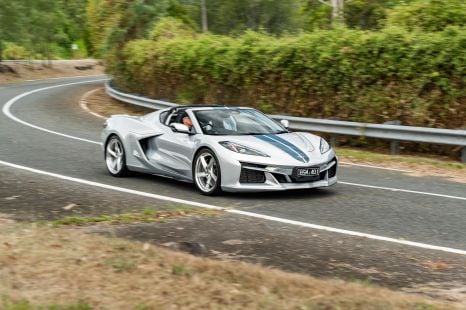

CarExpert.com.au
The CarExpert team's favourite cars of 2025
1 Hour Ago
The updated Kia Cerato hatch tested in flagship GT guise offers a lot of equipment and performance for the money, despite a recent price hike

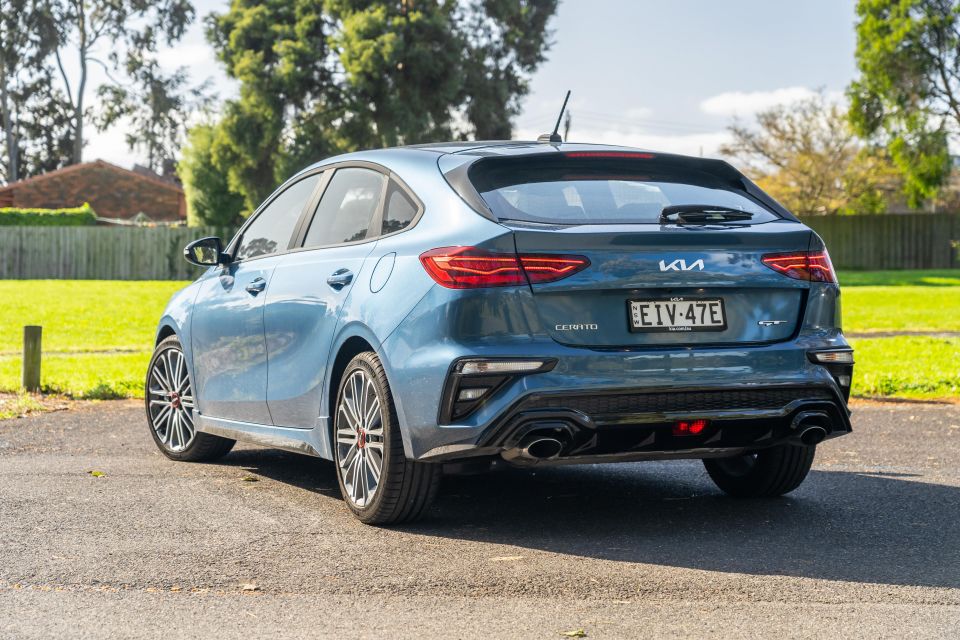

Senior Contributor
New from
$33,690
excl. on-roads

Senior Contributor
New from
$33,690
excl. on-roads


Senior Contributor
New from
$33,690
excl. on-roads

Senior Contributor
New from
$33,690
excl. on-roads
Quickly see how this car stacks up against its competition. Select any benchmark to see more details.
Where expert car reviews meet expert car buying – CarExpert gives you trusted advice, personalised service and real savings on your next new car.
The Kia Cerato GT offers warmed-up performance and sporty design add-ons for someone who isn’t in the market for a fully-fledged track-ready hot hatch.
Updated in June this year, the revised model adds new badging, subtle nose and tail design tweaks, a new suspension tune, better infotainment, plus some luxuries like a standard sunroof. Oh, and a $3000 price hike.
Regardless it remains an entertaining little car with plenty that should appeal to the young, or merely the young-at-heart. Here we drive the hatch, though a sedan is also available and to my eyes looks better.

The pre-update Cerato GT was available at a national drive-away price of $33,990, but the new 2022 model costs $36,990 on the road.
While no price increase is good news for buyers, the upside is that the Cerato still represents good value for money in its proper context.
It bisects the mechanically related Hyundai i30 N Line and better equipped i30 N Line Premium grades, and costs almost exactly the same as a much less-powerful Toyota Corolla ZR.
It’s also similar money to a Volkswagen Polo GTI, which offers more honed performance but is smaller and not as richly equipped as the Kia.
MORE: 2022 Kia Cerato price and specs
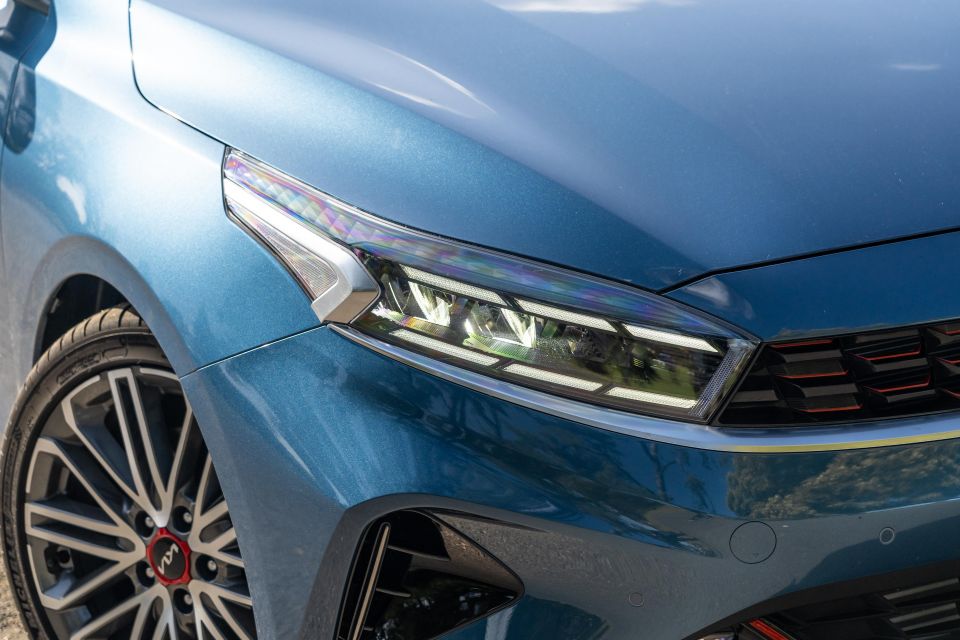
Buy your new car without the stress. It's fast, simple and completely free.

Great service from Travis and team, second time I have used this business would not hesitate to recommend them to anyone
Craig C.
Purchased a Ford Ranger in Sunshine Coast, QLD
CarExpert helped Craig save thousands on his Ford Ranger, now let us save you on your next new car.
Find a dealOn the outside there are 18-inch wheels wearing premium Michelin Pilot Sport 4 (225/40Z R18) rubber, LED head- and tail lights, a body kit, dual exhaust tips, electric and heated side mirrors, and proximity key access.
There are nine colours: Clear White, Snow White Pearl, Silky Silver, Steel Gray, Aurora Black, Platinum Graphite, Horizon Blue, Runway Red and the new Mineral Blue. All bar the first are $520 extra.
Inside there are leather-trimmed seats with powered adjustment and memory presets for the driver, heated and ventilated seats for both front occupants, dual-zone climate control, sporty alloy pedals, and a sunroof.
On the tech front the old 8.0-inch touchscreen has been replaced by a 10.25-inch unit with satellite navigation, wired Apple CarPlay and Android Auto, Bluetooth, digital radio, a wireless phone charger, three USB points, and a premium eight-speaker JBL sound system.

Crash tester ANCAP awarded the Kia Cerato five stars in 2019. It scored 90 per cent for adult occupant protection, 83 per cent for child occupant protection, 72 per cent for pedestrian protection, and 73 per cent for safety assist.
Safety features include six airbags, parking sensors at both ends, a reversing camera, and ISOFIX/top tethers.
Active safety comprises autonomous emergency braking (AEB) that detects pedestrians and cyclists, blind-spot monitoring, rear cross-traffic alert with collision avoidance, lane-keeping aid with steering assist, driver attention alert, Safe Exit Warning, lead-vehicle start alert, and active cruise control.
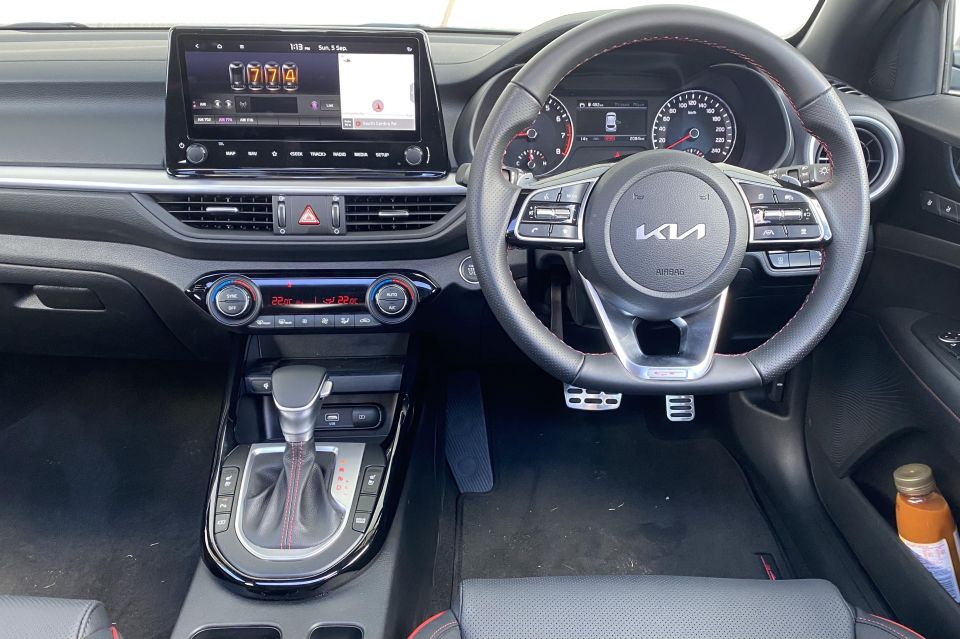
There are plenty of features to remind you that you’re in the range-topping variant.
These include a flat-bottom stitched wheel with new centre-piece and paddles adhered behind the spokes, alloy pedals, and well-bolstered ribbed seats with red stitching, powered movement, as well as both heating and cooling.
The bigger new 10.25-inch touchscreen is much better than the old system and offers sharp menu graphics and good processing speed.
The radio interface is retro-cool, the maps excellent, the camera of decent resolution, and the Sounds of Nature page plays various effects through the cabin such as a log fire that’ll really unleash the ASMR.
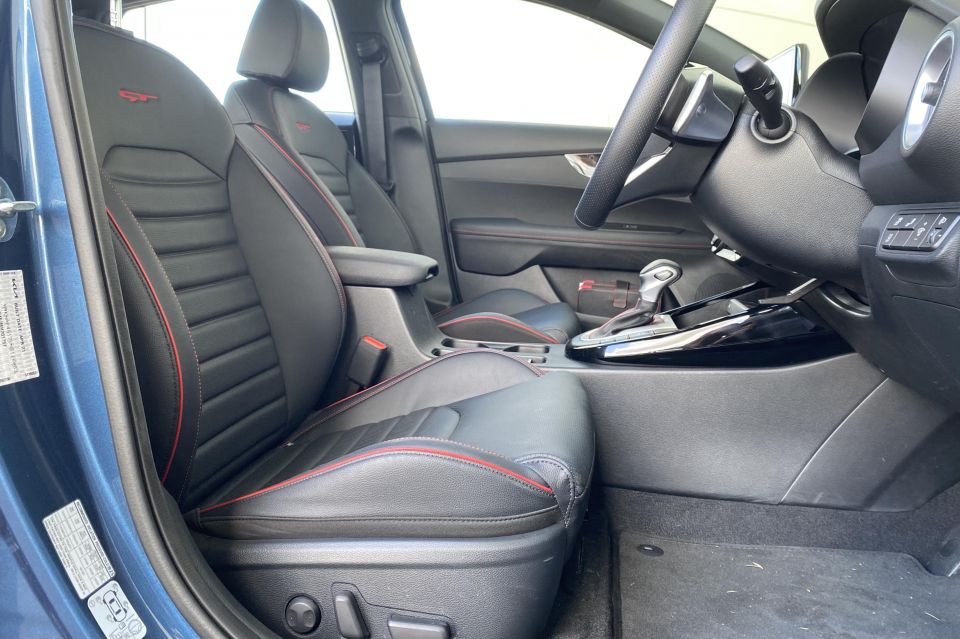
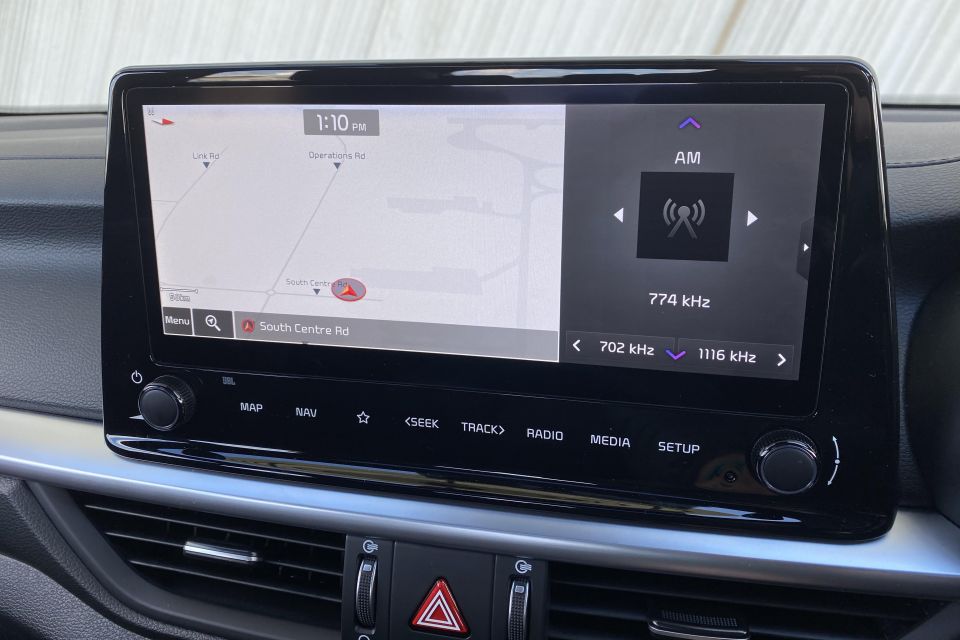
I also appreciated the ability of the large screen to show two menus concurrently – for example I could view navigation while cycling through DAB+ channels.
The JBL audio system is a step up on lower grades, and there’s both a wireless charger pad and digital radio. While there’s no wireless Apple CarPlay, Kia’s head units that do offer this system have proven highly glitchy. So, bullet dodged.
Kia has gone to some effort to elevate the cabin beyond fleet-special status, with contrast stitching and materials scattered about. It feels durable, but don’t expect Euro-style premium materials either.
The driver instruments are analogue (with a TFT for trip data), and while there are no additional frills such as a Mazda 3-style head-up display, you never feel unable to view key information.
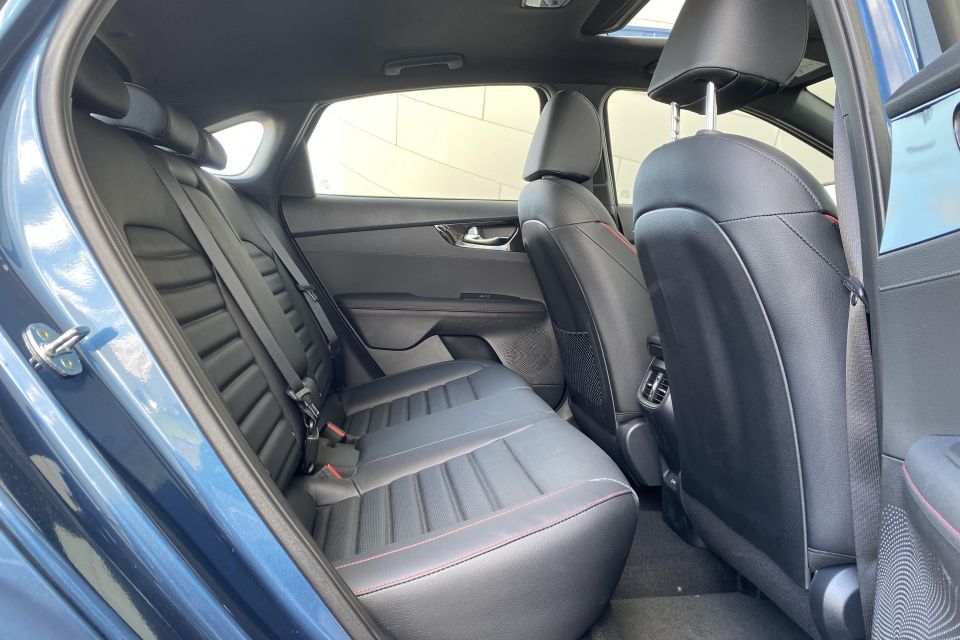
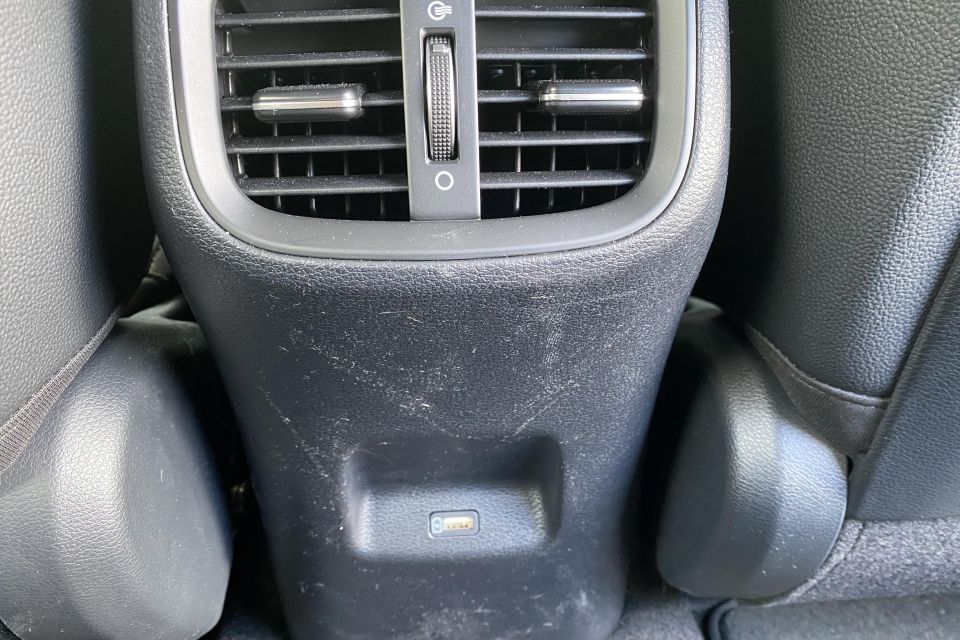
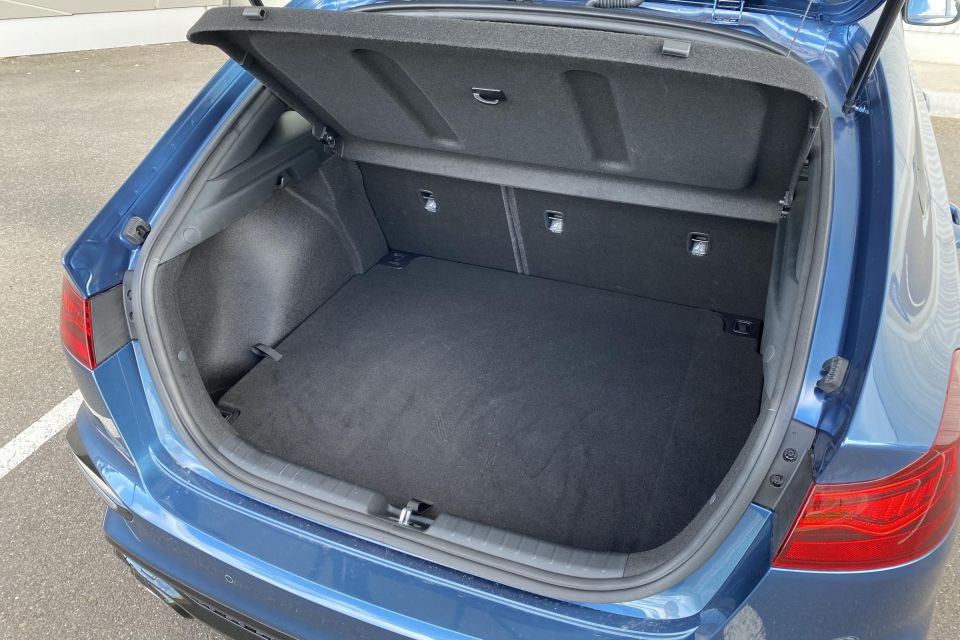
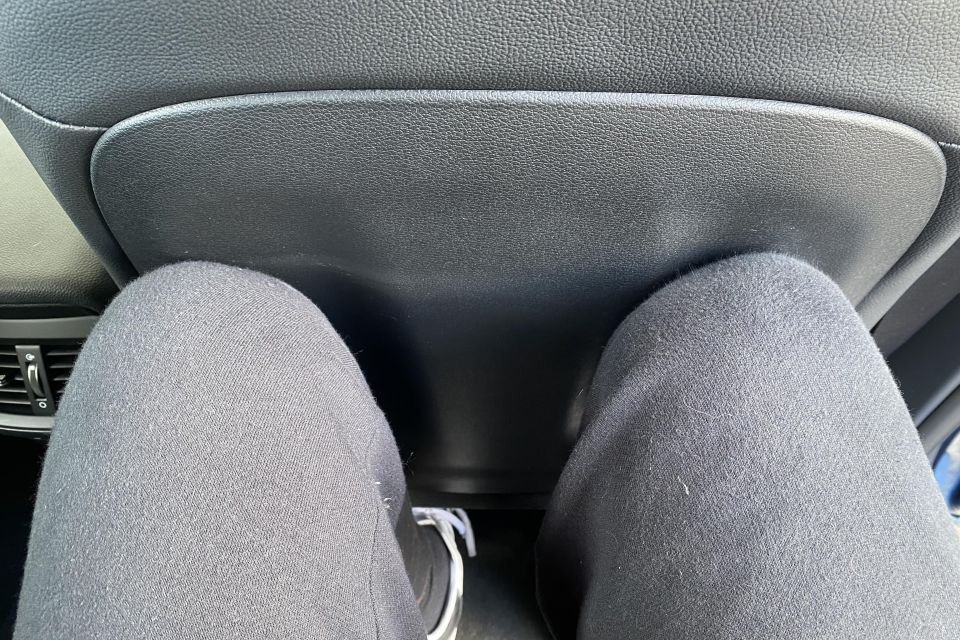
Back-seat legroom is fine for anyone 190cm or below, though headroom is slightly more cramped. There are rear air vents and a USB point, plus a cupholder/armrest.
Boot capacity for the hatchback is a generous 428 litres (VDA). This is in fact less capacious than than the sedan’s 502L claim, but the hatch has the wider opening. Those back seats fold forwards 60:40.
| Dimensions | Kia Cerato GT hatch |
|---|---|
| Length | 4510mm |
| Width | 1800mm |
| Height | 1440mm |
| Wheelbase | 2700mm |
| Boot | 428L (VDA) |
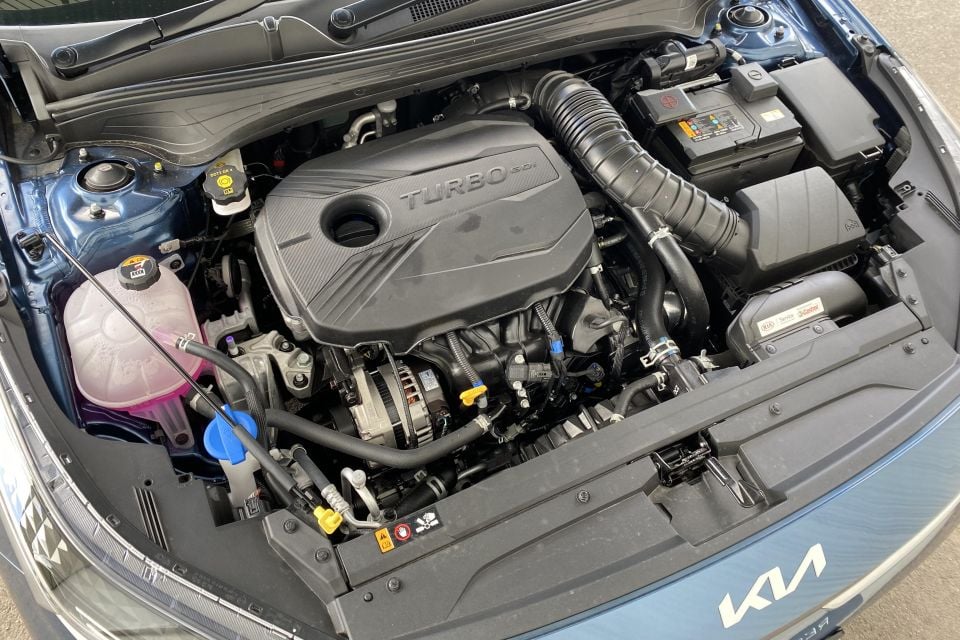
No changes to report here. The 1.6-litre turbo-petrol engine produces 150kW of power at 6000rpm and 265Nm of torque between 1500 and 4500rpm.
It drives the front wheels through a seven-speed DCT (dual-clutch automatic transmission) with paddle shifters for manual mode.
I achieved successive 0-100km/h runs of 7.2 seconds and 7.4 seconds. Fuel consumption is rated as 6.8 litres per 100km on the combined cycle, and it’ll run on 91 RON or E10 petrol.
| Drivetrain | Kia Cerato GT hatch |
|---|---|
| Engine | 1.6-litre turbo-four |
| Power | 150kW @ 6000rpm |
| Torque | 265Nm @ 1500-4500rpm |
| Driven wheels | Front |
| Transmission | Seven-speed DCT |
| 0-100km/h | 7.2-7.4 seconds |
| Fuel economy | 6.8L/100km 91 RON |
| Fuel tank | 50L |
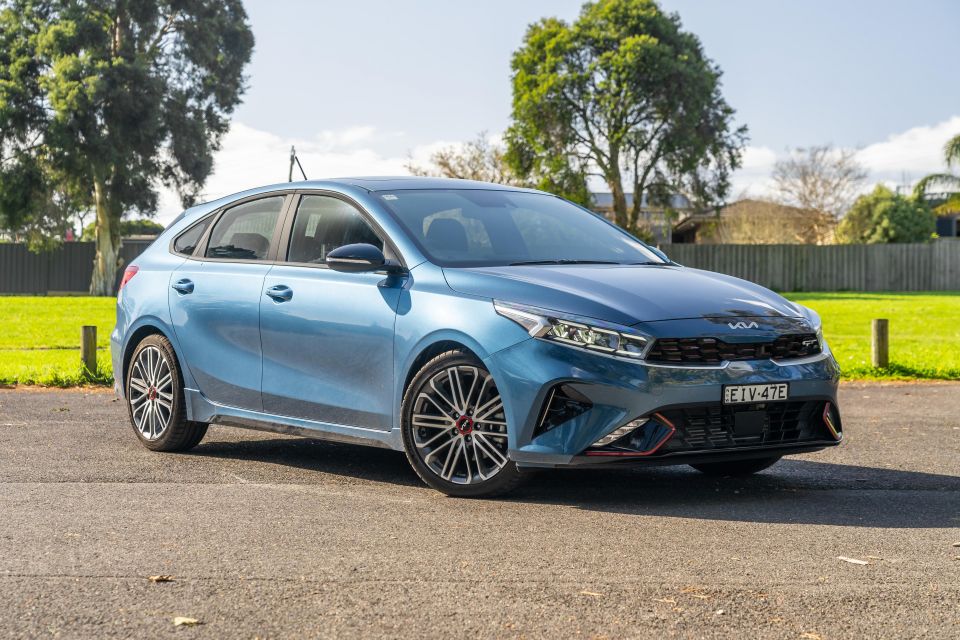
As befits its standing, the Cerato GT loses the base models’ rear torsion beam for better multi-link rear suspension. It also gets better front brakes including ventilated front discs with 305mm rotors.
There’s carried-over electric power steering, and four driving modes (Normal, Eco, Sport, Smart) that adjust drivetrain and steering response to suit your mood. However the dampers are passive.
The engine has quite a raspy sound to it, though there’s no trick active exhaust or any such thing. It certainly doesn’t hide its performance ambitions.
There’s a heap of torque available right down low, and just a hint of turbo lag when you really plant your foot. With no launch control built into the DCT it isn’t the easiest car to hurl off the mark but it has plenty of pick up.
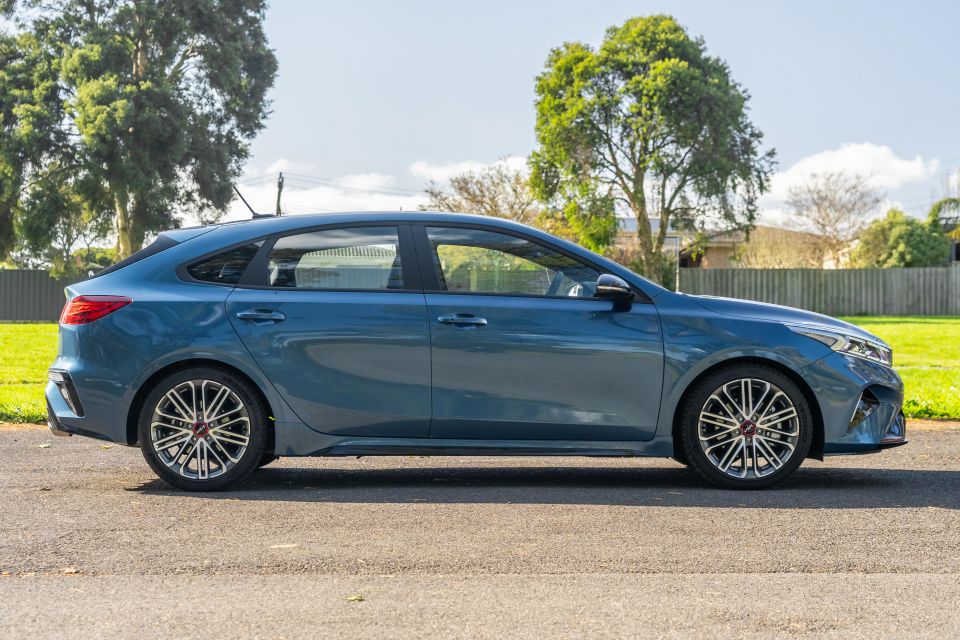
That DCT does elicit the odd hint of hesitancy if you really mash the accelerator to punch into a gap in traffic, and will run hot if you’re giving it hell after a while.
However its quick-shifting at pace and mostly obedient manual mode (except when the engine management deems it’ll inflict damage and kiboshes it) make it an entertaining offering.
You’ll like the steering, with plenty of directness from straight-on and some real heft to it in Sports mode. Perhaps a little less weight at low speeds would be good.
There’s no front LSD so if you hit a corner hot you’ll understeer, however for the most part the chassis balance and grip from those good tyres was first rate for a tier-two performance car like this.
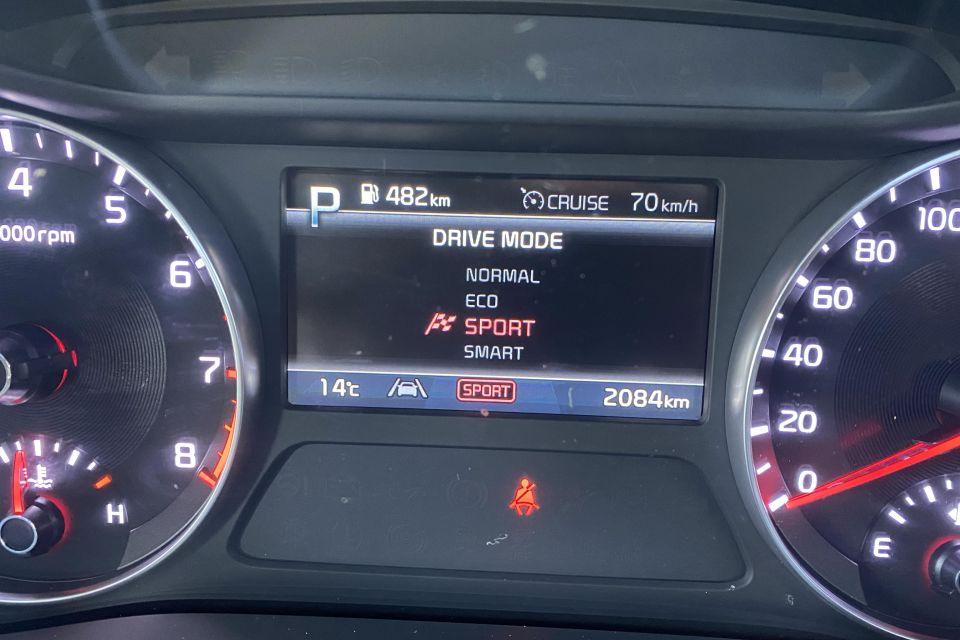
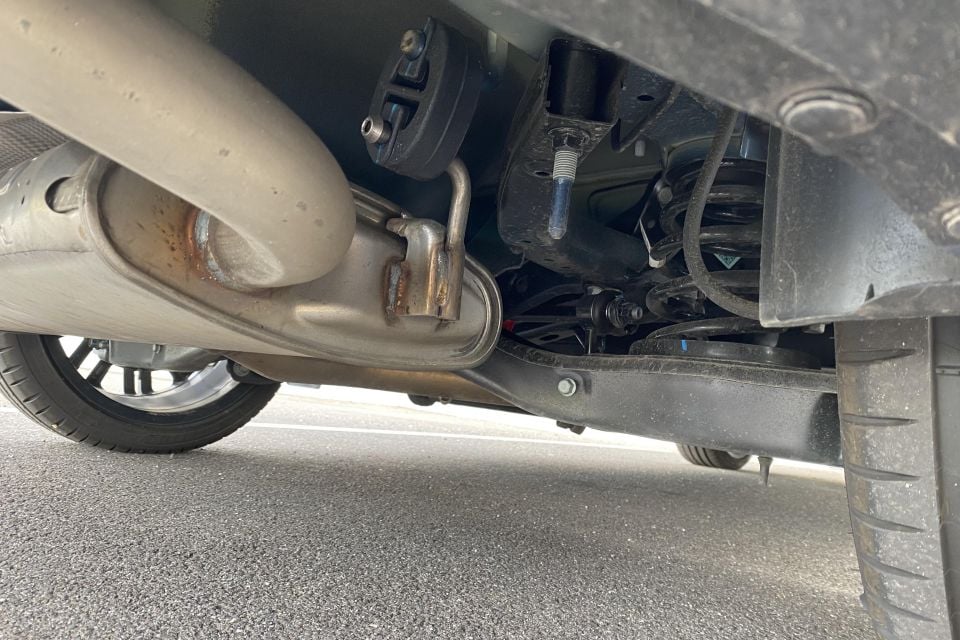
The localised suspension tune uses a similar spring rate to the Kia Proceed GT (RIP) and definitely errs towards firm in terms of body movement. However the spring and damper setup filters out the sharpest inputs well.
Kia nailed the damper rebound tune in particular, because even when you start to really push there’s little skipping about on crappy back roads.
Probably the two weak points are the noise suppression on coarse-chip bitumen, with a 74dB average at 100km/h nothing to write home about, and the lack of headroom for tall or helmeted drivers with that new sunroof.
So, a bit raspy, loud and stiff, but not overtly so. Definitely skewed towards younger drivers.
| Chassis | Kia Cerato GT hatch |
|---|---|
| Front suspension | McPherson strut |
| Rear suspension | Multi-link |
| Steering | EPAS |
| Front brakes | 305mm ventilated discs |
| Rear brakes | 284mm solid discs |
| Turning circle | 10.6m |
| Ground clearance | 135mm |
| Tyres | Michelin Pilot Sport 4 |
| Tare mass | 1395kg |
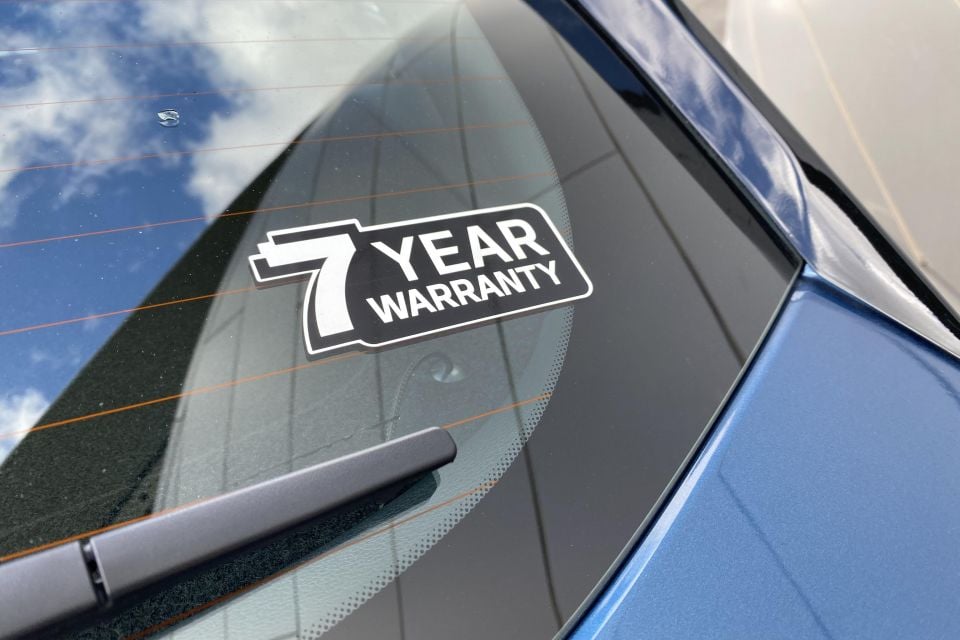
All Kias come with an excellent seven-year and unlimited kilometre warranty.
However the Cerato GT’s service intervals are quite short at 12 months or 10,000km, and not especially cheap at $3234 for seven services (averaging $462 per visit).
Non-turbocharged Cerato models offer longer 15,000-kilometre intervals between visits, and a five-year servicing plan for the related i30 N Line Premium with DCT auto costs $1495.

Kia’s product planners have kept the updated Cerato GT focused: it’s firm, puts handling ahead of refinement, and offers respectable turbocharged punch.
At $36,990 drive-away it’s not exactly the cut-price option it once was, but Kia is no orphan there. In fairness the company has added more luxury features and better infotainment.
Click the images for the full gallery
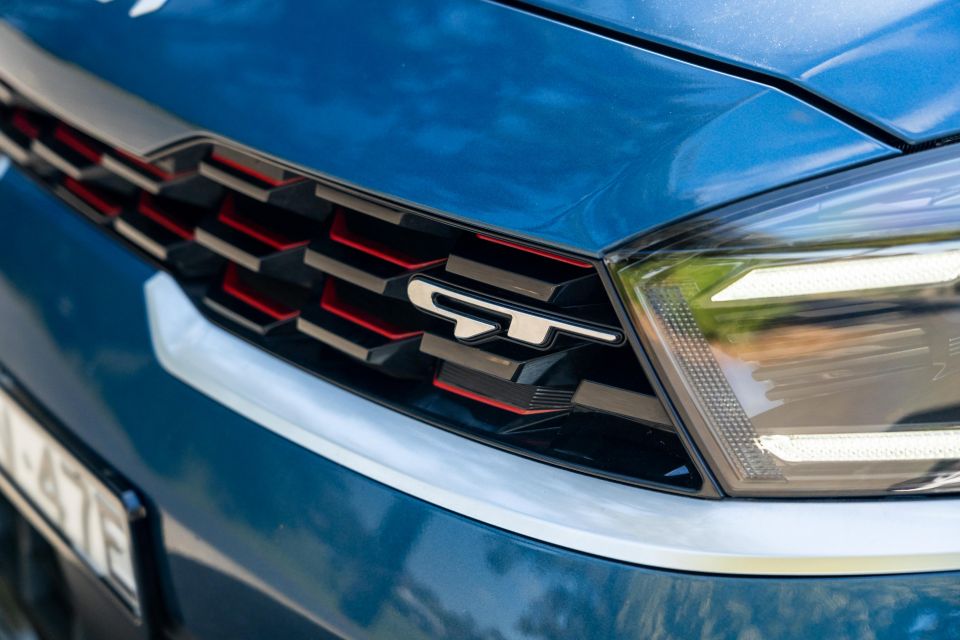
Where expert car reviews meet expert car buying – CarExpert gives you trusted advice, personalised service and real savings on your next new car.
Where expert car reviews meet expert car buying – CarExpert gives you trusted advice, personalised service and real savings on your next new car.


CarExpert.com.au
1 Hour Ago
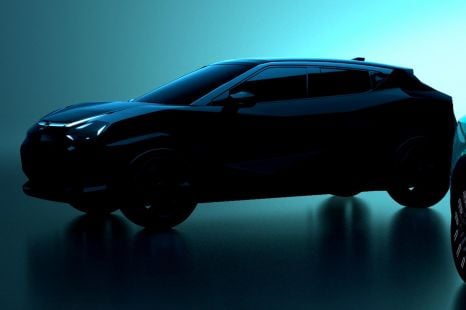

Damion Smy
15 Hours Ago
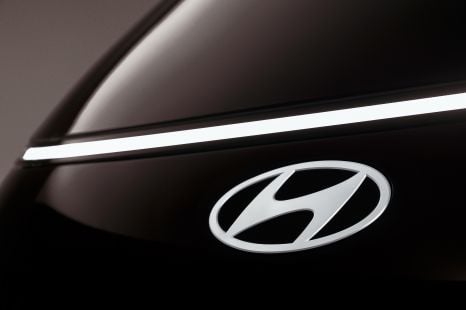

Damion Smy
18 Hours Ago
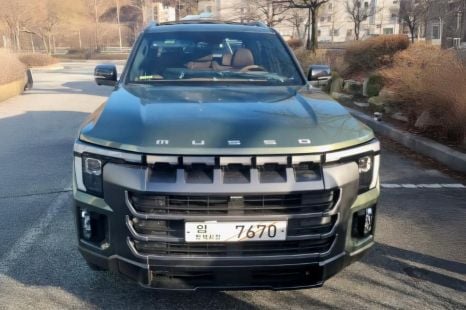

Damion Smy
22 Hours Ago


Damion Smy
23 Hours Ago
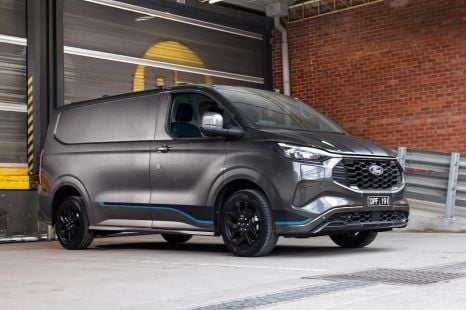

Damion Smy
23 Hours Ago